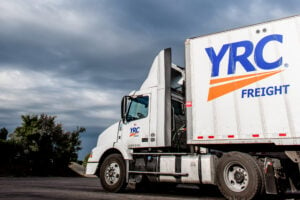Spend any time around tech startup circles today and you’ll quickly come across mention of the Sharing Economy. In fact, you may even be participating in this Sharing Economy right now – and not even know it.
This is where companies develop online marketplaces to help people connect with one another, often perfect strangers, over everything from vacation homes (Airbnb, HomeAway) to restaurant reservations (OpenTable) and boats rentals (BoatBound) to rides around town (RideRelay, Lyft) and more. Once two parties use a marketplace to connect virtually, they are then able to arrange and coordinate directly with each other through digital tools provided.
Truth be told, the phenomenon isn’t exactly new. eBay pioneered the peer-to-peer marketplace model long ago. But today, it’s far more sophisticated, now driven by finely-tuned software, pricing algorithms and multitude of features that enable feedback, payments, security and more.
So, what’s this have to do with shipping and logistics?
Trucking companies, just like that vacation home owner or ride-service car owner, have a valuable expiring asset: empty space. As days pass, any time that space is left unfilled or unoccupied, it fails to provide a return.
Marketplaces in hospitality, e-commerce, personal transportation, and countless other industries have embraced the marketplace model in order to bring greater efficiency to filling that empty space.
Meanwhile, in shipping and logistics, marketplaces tend to be largely misunderstood, often lumped in with brokers or load boards because, well, to some they are difficult to classify against “how we’ve always done it.”
But that’s the problem. Online shipping and freight marketplaces in shipping, such as uShip, are distinct from freight brokers and load boards in several key ways:
Pricing:
On marketplaces, pricing is out on the table and transparent, including fees. Both parties know what the other is paying or receiving, creating healthier competition and ability to monitor fluctuations in the market.
Connection:
Once people or parties find each other and are connected via a freight marketplace, they then arrange and finalize their own shipping and logistics, not representatives of the marketplace itself.
Technology:
Marketplaces provide a host of online tools and technologies for sourcing, booking, BOLs, tracking, delivery confirmation, payments, security, authority monitoring and more that make things more efficient, often completely eliminating the need for time consuming phone calls and faxes.
Transactional:
Marketplaces allow people and businesses to securely transact online, even through mobile phones.
Feedback:
The philosophical cornerstone of any marketplace is trust. Tactically, the system rewards the good and recognizes the bad. Freight marketplaces display this transparently where other models don’t openly put it on display or aren’t willing to share it.
So are online shipping marketplaces the slam dunk answer to freight’s problems? Hardly, and not every marketplace is created equal either.
Bill Gurley, general partner at Benchmark Capital, an early investor in both eBay, uShip and many other marketplaces, opines that the most successful marketplaces can occur when key conditions are present. Among them equal pull of supply and demand, a highly-fragmented industry, technology that adds value, the opportunity for greater economic opportunity and a sizable addressable market.
On all accounts, this is shipping and logistics.
And if it brings greater efficiency to freight, it’s really a good thing. After all, we’re all just trying to get stuff from A to B in the best way possible, whether a marketplace, load board or broker.
Jim Bramlett is GM of LTL Freight at uShip, an online shipping marketplace that’s been connecting consumers and business shippers with empty truck space since 2004.



